Immerse yourself in the ancient wisdom of the Bible's School of Prophets, where prophecy and education merge, shaping history and spirituality.
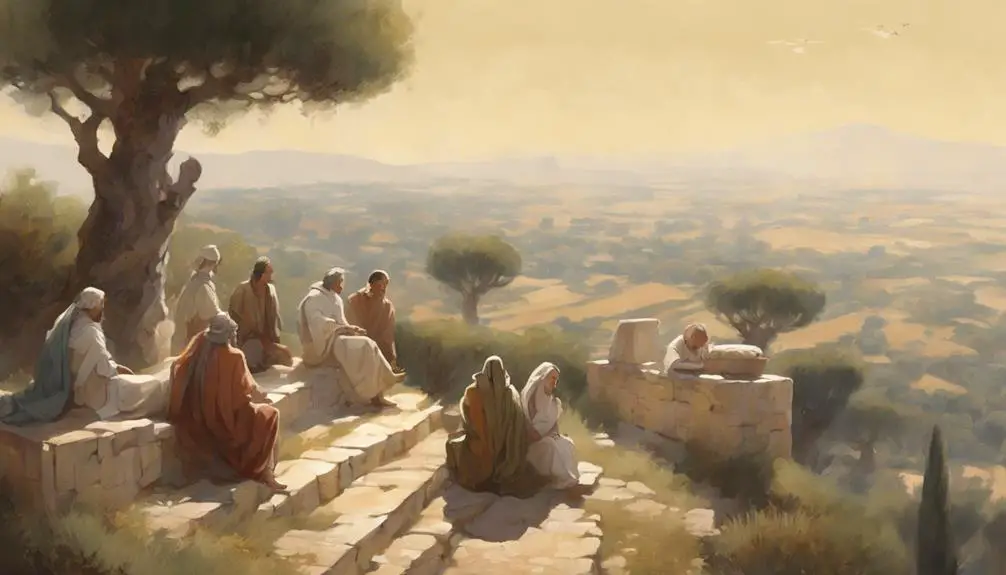
School of Prophets in the Bible
Imagine you're walking through ancient Israel, and you stumble upon a group of individuals engaged in deep theological discussions, honing their prophetic skills under the shade of a large oak. This scene isn't far-fetched; it's a glimpse into the life within the biblical School of Prophets.
These schools were not just about prophecy but also served as centers for political, social, and spiritual education. Key figures like Samuel and Elisha played pivotal roles in their development and legacy.
As you ponder their purpose and influence, you might wonder how these ancient institutions compare to modern spiritual education and their impact on contemporary religious thought.
Key Takeaways
- The School of Prophets served as a training ground for divine messengers, emphasizing scriptural study and spiritual disciplines.
- Key figures like Elijah and Isaiah played pivotal roles, blending their divine messages with socio-political engagement.
- This institution's legacy profoundly influences theological thought, moral frameworks, and interfaith dialogue across cultures and epochs.
- Biblical accounts provide detailed narratives of the prophets' lives, enhancing modern understanding of their messages and relevance.
Historical Origins
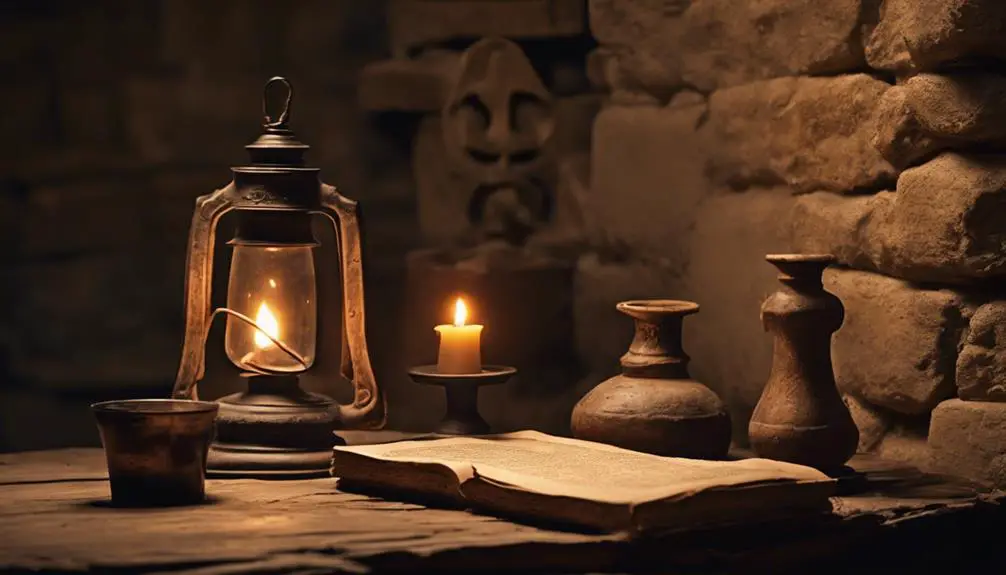
How did the concept of prophecy first emerge within the historical context of the ancient Near East, shaping the role of prophets in the Bible? You've got to consider the cultural context, where divination and the interpretation of omens were deeply embedded in societal norms. Archaeological evidence, including inscriptions and artifacts, suggests that prophets weren't unique to the Israelites but were a widespread phenomenon in the Near East. These artifacts show that prophets played significant roles in advising kings and leaders, based on divine revelations or interpretations of signs.
The prophets in the Bible, however, took on a unique role within this broader cultural tapestry. They weren't just intermediaries between the divine and the earthly realms; they were also moral and ethical guides for the community. Their prophecies often contained calls for justice, adherence to covenantal laws, and warnings of divine retribution for societal sins. This distinct role didn't emerge in a vacuum. It was shaped by the Israelites' historical experiences, such as the Exodus and the Babylonian Exile, which underscored the importance of covenantal faithfulness and social justice in their communal identity.
Purpose and Training
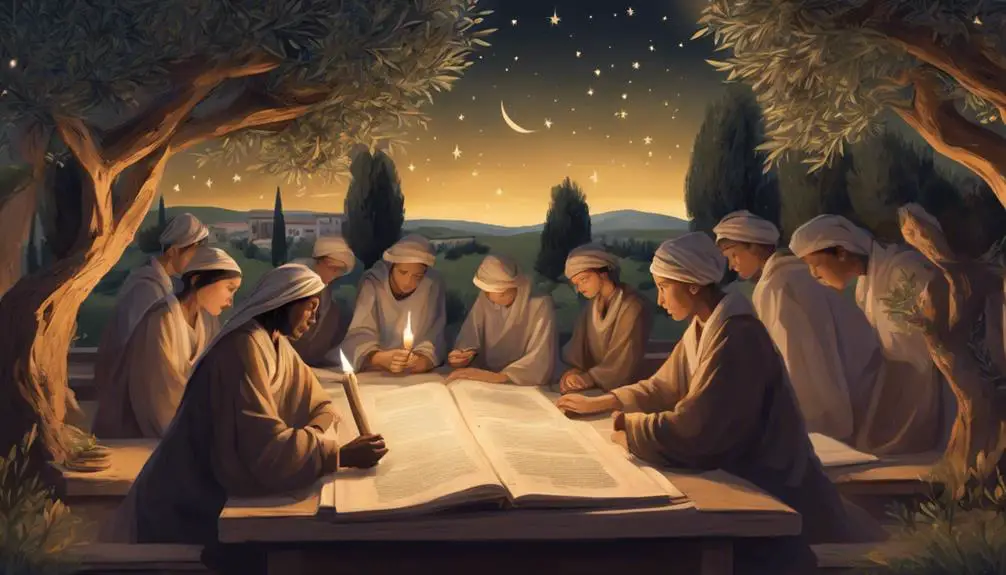
While the primary purpose of prophets in the Bible was to serve as divine messengers, their training and preparation were equally critical in ensuring they fulfilled their roles effectively. The rigorous path they embarked upon wasn't just about mastering the art of prophecy but also about deeply understanding the nature of divine communication and cultivating spiritual disciplines that would anchor them throughout their prophetic missions.
The training of these prophets included:
- Intensive study of the Scriptures: to ensure they were well-versed in the laws and teachings that guided their communities.
- Mentorship under experienced prophets: where they learned the nuances of interpreting divine messages.
- Prayer and meditation: to develop a closer relationship with God and enhance their receptivity to divine communication.
- Fasting and other ascetic practices: to purify themselves and sharpen their spiritual sensitivity.
- Community service: to ground their spiritual insights in real-world applications and empathize with the people they were meant to guide.
This comprehensive approach ensured that the prophets weren't only messengers of God but also embodiments of the spiritual disciplines they preached, making their impact profound and enduring.
Key Figures
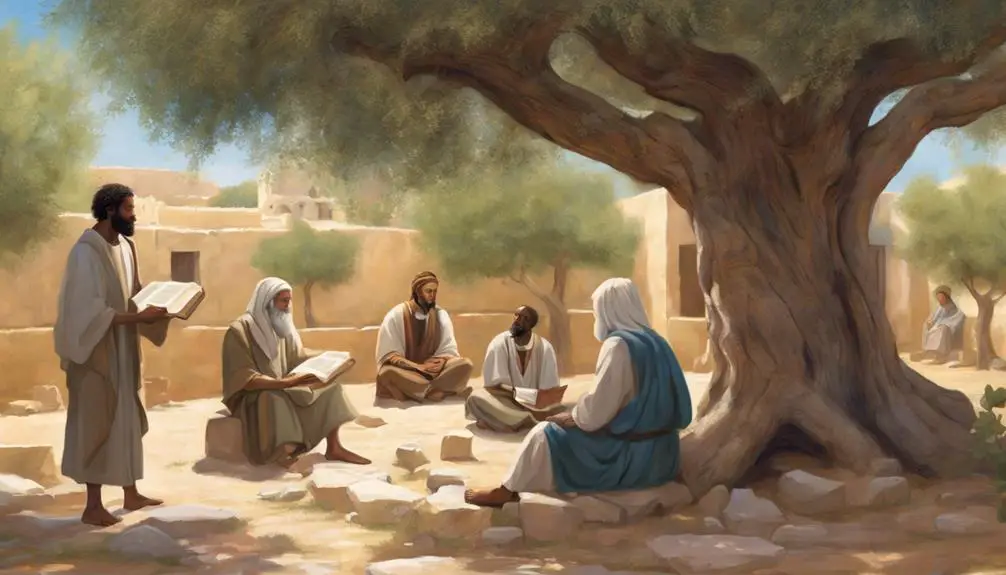
Having explored the preparation and training of biblical prophets, we now turn our attention to the key figures who exemplified these principles through their impactful ministries. Notably, their prophetic attire and divine encounters marked them as distinct messengers of God's will.
Elijah, for instance, is renowned for his cloak, a symbol of his prophetic office, and his confrontation with the prophets of Baal, a divine encounter that underscored his authority and God's supremacy. Similarly, Isaiah's call to prophecy, marked by a vision of God seated on a high and lofty throne, serves as a seminal example of a divine encounter that shaped his ministry and messages.
These prophets, among others, weren't merely religious figures but were deeply integrated into the socio-political fabric of their times. Their attire and the divine encounters they experienced weren't only personal spiritual milestones but also served to authenticate their messages to the people and the rulers of their day.
In analyzing these key figures, it's crucial to recognize how their divine encounters and symbolic attire underscored the seriousness of their call and the divine authority backing their pronouncements. Their lives and ministries provide a template for understanding the dynamics of prophetic ministry in a biblical context.
Influence and Legacy
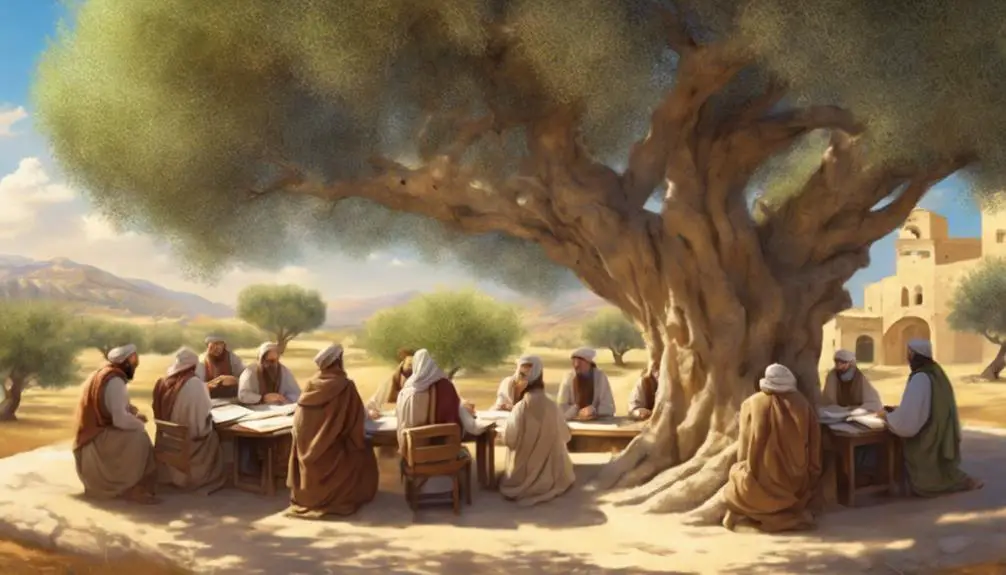
The influence and legacy of biblical prophets extend far beyond their temporal ministries, shaping the theological and moral frameworks of generations. Their narratives and teachings, rich in wisdom and insight, have permeated through countless cultures and epochs, leaving an indelible mark on both religious thought and secular understanding.
Modern interpretations of these ancient figures have varied widely, reflecting the diverse contexts in which they're engaged. The cultural impact of these interpretations can't be overstated, influencing everything from art and literature to social justice movements. Scholars have meticulously analyzed their messages, finding relevance and guidance for contemporary issues within their ancient words.
Consider the following points to grasp the depth of their legacy:
- Their teachings offer timeless wisdom on justice, mercy, and faith.
- Prophetic narratives inspire countless artists, writers, and musicians.
- Their lives and messages are central to the identity of multiple faith communities.
- Modern social movements often draw upon their calls for justice and righteousness.
- Their stories provide a common language for interfaith dialogue and understanding.
These elements underscore the enduring relevance of biblical prophets, demonstrating their profound influence on both individual lives and broader societal norms.
Biblical References
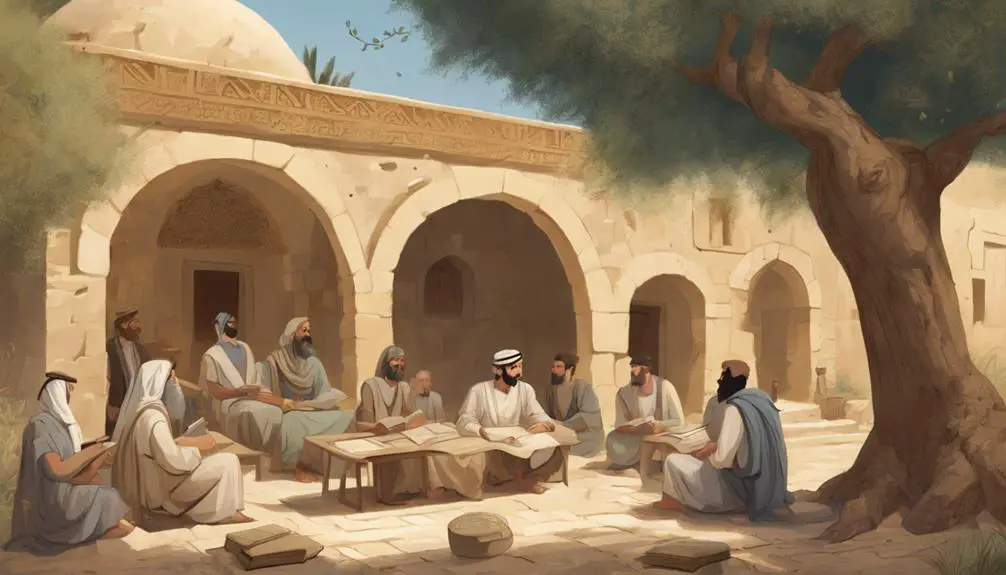
Understanding the influence and legacy of biblical prophets necessitates a close examination of the scriptural references that document their lives, messages, and divine interactions. These texts, steeped in historical and spiritual significance, offer a lens through which you can explore the multifaceted roles these figures played in shaping religious thought and practice.
The geographical locations mentioned within these narratives, from the deserts of Judea to the bustling streets of Jerusalem, not only provide a physical backdrop but also contribute to the depth and richness of the prophetic messages. They ground the divine encounters and miraculous events in a tangible reality, making the stories more relatable and impactful.
Modern interpretations of these scriptural references have further expanded our understanding, allowing you to grasp the complexities of the prophets' messages and their relevance to contemporary issues. Scholars and theologians dissect these texts, highlighting the timeless wisdom embedded within and drawing parallels to today's societal challenges.
Frequently Asked Questions
How Did the Concept of a "School of Prophets" Differ in Various Cultures Surrounding Ancient Israel?
You're exploring how the concept of a 'school of prophets' varied across different cultures around ancient Israel. It's fascinating how cultural exchanges influenced prophet education, leading to diverse practices.
These variations manifested in teaching methods, the role of prophecy, and the integration of local traditions. Analyzing these differences gives you insight into the broader cultural landscape, highlighting how societies adapted and reshaped the idea of prophetic schooling to fit their unique spiritual and cultural frameworks.
Were There Any Notable Rivalries or Conflicts Between Different Schools of Prophets or With Other Religious Groups?
You're delving into whether there were rivalries or conflicts among different prophetic alliances or with other religious groups.
It's crucial to consider the leadership dynamics within these alliances, as they often influenced the emergence of conflicts.
These rivalries weren't just personal; they were deeply rooted in differing theological views and practices.
Analyzing the intricate relationships and tensions among these groups reveals the complex social and religious landscape they navigated.
How Did the Role and Recognition of Prophets Evolve in Later Religious Texts and Traditions Outside of the Bible?
In later religious texts and traditions outside the Bible, you'll find that the role and recognition of prophets significantly evolved. Islamic prophecy, for instance, places immense emphasis on Muhammad as the final prophet, shaping the core of Islamic belief.
Similarly, Sufi mystics, with their profound spiritual insights, often draw comparisons to prophets, though their experiences are more personal and less about universal mandates.
This evolution reflects a broader, more nuanced understanding of divine communication.
Can Parallels Be Drawn Between the Ancient Schools of Prophets and Modern Theological Seminaries or Religious Study Centers?
You can indeed draw parallels between ancient schools and modern theological seminaries. These contemporary institutions embody modern pedagogy while striving for spiritual accreditation, much like their ancient counterparts aimed for.
Through rigorous academic and spiritual training, they prepare individuals for religious leadership, echoing the mentorship and teachings once provided by the prophets. This evolution showcases how foundational principles endure, adapting to meet the demands of each era's faithful.
What Archaeological Evidence, if Any, Supports the Existence of These Schools of Prophets, and How Do Researchers Interpret These Findings?
You're exploring the existence of prophetic schools through archaeological evidence. Your focus is on prophetic artifacts and inscription analysis. Researchers meticulously study these findings, linking them with ancient texts to confirm their origins.
The interpretation of these artifacts and inscriptions provides crucial insights, potentially validating historical accounts. Your analytical approach sheds light on how scholars piece together the past, offering new perspectives on these ancient institutions.
Conclusion
In conclusion, the biblical School of Prophets stands as a pivotal institution, deeply embedded in ancient Israelite society. It served not merely as a center for prophetic training but also as a crucible for theological, ethical, and political discourse.
Key figures, such as Samuel, emerged from this milieu, shaping Israel's destiny. Its enduring legacy, underscored by scriptural references, reveals its fundamental role in fostering a prophetic tradition that has profoundly influenced subsequent Judeo-Christian thought and practice.

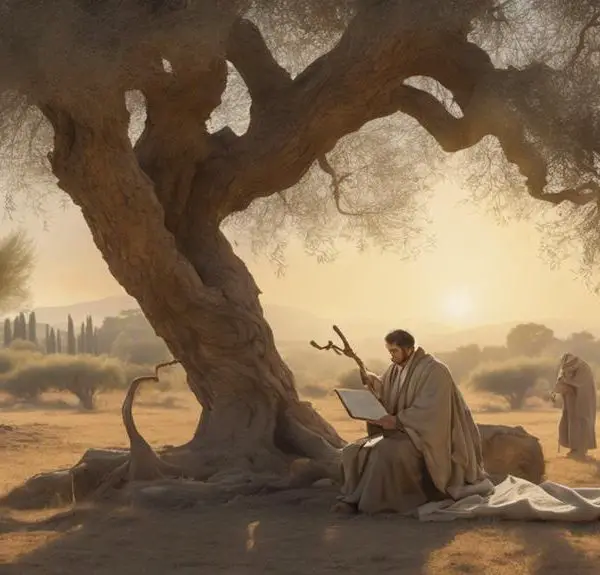

Sign up